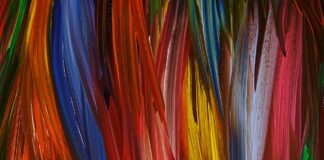Seals, in the context of wildlife and biology, represent a fascinating and diverse group of marine mammals that have adapted to life in both aquatic and terrestrial environments. These remarkable creatures, known for their streamlined bodies and exceptional swimming abilities, encompass a range of species, from the iconic harbor seal to the powerful and majestic elephant seal. The term “seal” is not only used to describe these marine mammals but also finds application in various other domains, from military and security operations to the broader metaphorical use of the word.
The word “seal” primarily refers to a diverse group of marine mammals classified under the order Pinnipedia, which includes seals, sea lions, and walruses. These animals are well-adapted to life in aquatic environments, possessing specialized features such as streamlined bodies, flipper-like limbs, and the ability to close their nostrils tightly to prevent water entry. Seals are further categorized into true seals (phocids), sea lions (otariids), and walruses (odobenids), each exhibiting unique adaptations to their specific habitats and lifestyles.
Harbor seals, commonly found along coastal regions of the Northern Hemisphere, exemplify the characteristics of true seals. These sleek and agile marine mammals are well-suited for both swimming and maneuvering on land. Their bodies are designed for efficient movement through water, aided by powerful rear flippers and a streamlined shape. On land, harbor seals may appear somewhat clumsy, but their bodies are adapted for effective thermoregulation, allowing them to thrive in a variety of environmental conditions.
Leopard seals, found in the Southern Hemisphere, offer another captivating example of the diversity within the seal family. Named for their distinct spotted coat patterns, these seals are formidable predators known for their prowess in the water. With sharp teeth and a streamlined body, leopard seals are expert hunters, preying on fish, squid, and even penguins. Their adaptability and predatory skills underscore the versatility that seals exhibit within their respective ecosystems.
In a broader context, the term “seal” extends beyond the realm of marine biology and finds application in the military and security domains. Military seals are insignias or symbols used to authenticate documents, equipment, and personnel. These seals often bear emblems, logos, or unique identifiers that signify authenticity and authority. The concept of a seal in this context serves as both a practical security measure and a symbol of trust, ensuring that designated individuals or items are legitimate and authorized.
Naval seals, also known as Navy SEALs, represent an elite special operations force within the United States Navy. Renowned for their exceptional training, versatility, and ability to operate in diverse environments, Navy SEALs are a prime example of how the term “seal” is employed to describe a highly specialized and skilled group of military personnel. Their missions encompass a wide range of tasks, including direct action warfare, unconventional warfare, counter-terrorism, and special reconnaissance.
Metaphorically, the term “seal” is often used to describe the act of closing or securing something tightly. This can be seen in everyday language, where the notion of sealing signifies the completion or finalization of a task. For example, a signed contract may be referred to as “sealed,” indicating that it is legally binding and finalized. The metaphorical use of “seal” extends to various contexts, emphasizing the idea of closure, security, and the assurance that something is definitively concluded.
The conservation of seals, particularly those facing threats due to environmental changes and human activities, is a critical aspect of ensuring the health and balance of marine ecosystems. Habitat loss, climate change, and human disturbance are among the challenges that impact seal populations worldwide. Conservation efforts often focus on protecting breeding grounds, managing fisheries to reduce bycatch, and mitigating the effects of climate change to safeguard the habitats essential for seals’ survival. Marine mammal sanctuaries and protected areas contribute significantly to the conservation of seals, providing safe spaces for these animals to thrive and ensuring their ecological roles are preserved.
In the economic domain, the term “seal” is also associated with official marks or impressions on documents and products, serving as a guarantee of authenticity and quality. Official seals on documents, such as government certifications or notarized papers, authenticate their legitimacy. Similarly, quality seals on products, such as certifications from standards organizations, assure consumers that the product meets specific quality and safety standards. The use of seals in this context adds a layer of assurance, instilling confidence in the reliability and authenticity of the associated items or information.
Seals, in their various applications and representations, have also found their way into cultural symbolism and mythology. In different cultures, seals are often featured in folklore, representing qualities such as adaptability, intuition, and transformation. Indigenous communities, for example, may incorporate seals into their stories as symbols of resilience and harmony with the natural world. The cultural significance of seals underscores their role not only as biological entities but also as powerful symbols embedded in the human narrative.
The word “seal” carries historical weight, especially in the context of documents and correspondence. In ancient times, seals were used as a form of personal or official signature, often imprinted onto wax or clay to mark the authenticity of a message or decree. The idea of a sealed document signified its importance and the authority behind its contents. While the methods have evolved with technological advancements, the concept of a seal as a mark of authenticity persists, bridging the historical and contemporary significance of the term.
Seals’ role in marine ecosystems goes beyond their individual species. As apex predators, they contribute to maintaining a balance in the food chain by controlling the populations of prey species. Their presence influences the distribution and behavior of prey, thereby indirectly impacting the entire ecosystem. The interconnectedness of marine life emphasizes the importance of understanding and preserving the role seals play in these intricate systems.
In conclusion, seals, whether referring to the captivating marine mammals inhabiting our oceans or the symbolic representations of authority and authenticity in military and security contexts, offer a rich tapestry of meaning. From the agile harbor seals navigating coastal waters to the powerful Navy SEALs executing specialized military operations, the term “seal” encompasses a diverse array of associations. Beyond its biological and military significance, the metaphorical use of “seal” in language underscores its versatility as a symbol of completion, security, and trust in various aspects of our lives.














